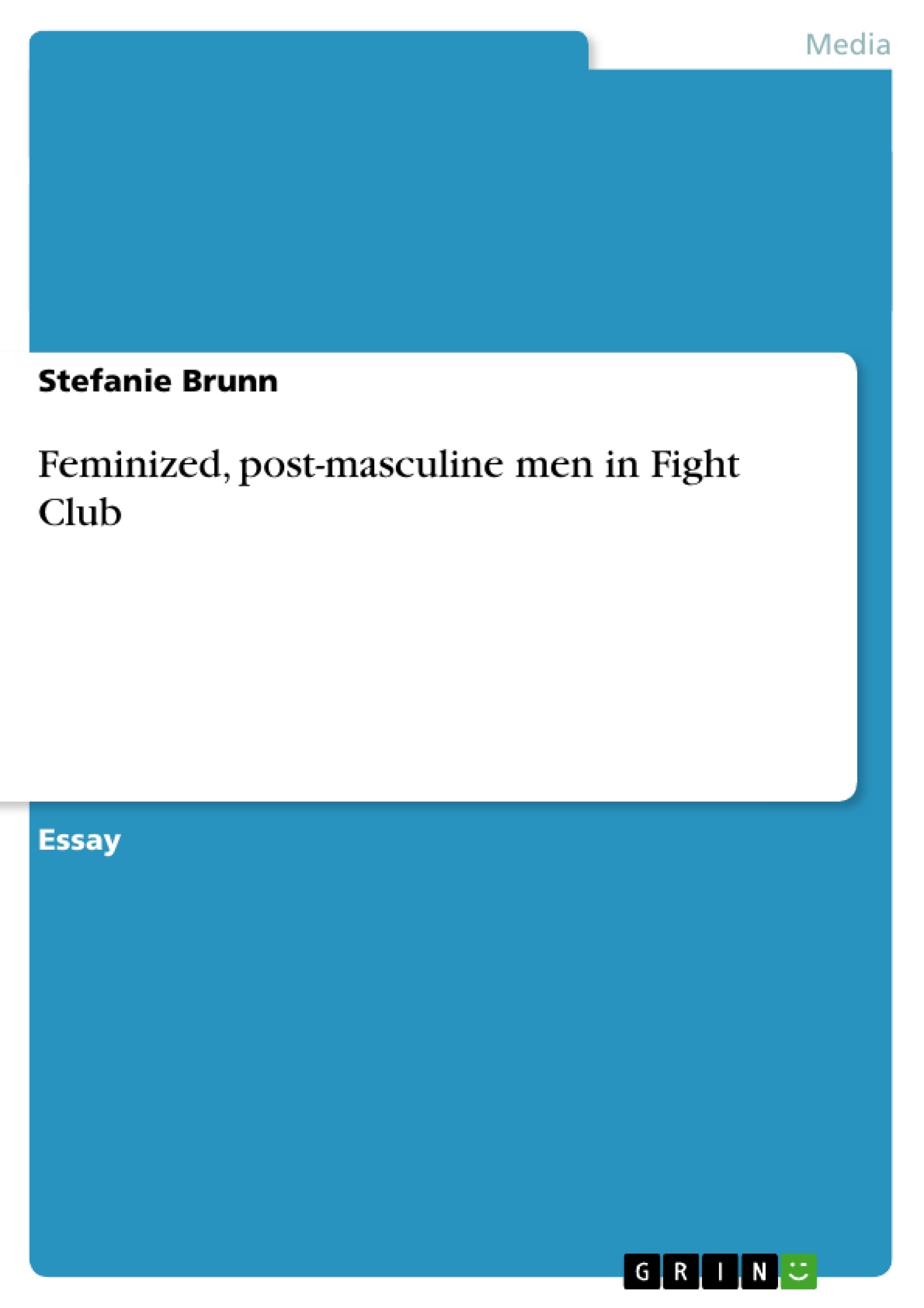David Fincher’s movie Fight Club (1999)1 provoked a lot of debates because of its explicit depictions of violence, the representation of a mental disease, called Dissociative Identity Disorder (DID), and its questioning of today’s masculine role. The latter is a very interesting theme to which I will dedicate this essay. In the following, I will show and analyze the representation of the feminized, post-masculine men in Fight Club.
Firstly, I will concern myself with the causes of this emasculation. Directionless and without any real-life role-models or strong father figure, without any wars or enemies, men in Fight Club are drawn to consumer society to find a new focus in their lives. But consumerism feminizes men’s bodies and pushes them more and more into a female sphere.
Secondly, the effects of this feminization will be analyzed. Men want to re-masculinize their bodies and try to achieve this through a traditionally masculine way: violence. But even aggressive behaviour does not rescue them from their feminized self, as deriving pleasure from a fight involves both parts a sadistic, male and a masochistic, feminine one.
Inhaltsverzeichnis (Table of Contents)
- Introduction
- Causes
- Effects
- Physical Effects
- Psychological Effects
- Conclusion
- Bibliography
Zielsetzung und Themenschwerpunkte (Objectives and Key Themes)
This essay aims to analyze the representation of feminized, post-masculine men in David Fincher's film Fight Club (1999). It explores the causes and effects of this emasculation, focusing on how men in a consumer-driven society seek to redefine their masculinity through violence.
- The impact of consumerism on masculinity
- The search for a new masculine identity in the absence of traditional role models
- The paradoxical expectations placed on contemporary men
- The use of violence as a means of re-masculinization
- The role of the body in constructing masculinity
Zusammenfassung der Kapitel (Chapter Summaries)
The introduction sets the stage for the analysis, highlighting the film's controversial depictions of violence and mental illness, and introducing the key theme of masculinity. Chapter 2 examines the causes of emasculation, focusing on the lack of traditional role models, the absence of war, and the impact of consumerism on men's identities. The chapter argues that men in Fight Club are seeking purpose and meaning in a society that offers them little direction.
Chapter 3 explores the effects of feminization on both the physical and psychological levels. It analyzes how men attempt to re-masculinize their bodies through violence and how this aggressive behavior often involves both sadistic and masochistic impulses. The chapter also discusses the role of the body in constructing masculinity, exploring how the male body is increasingly seen as a fashion item and a product of consumer culture.
Schlüsselwörter (Keywords)
This essay explores key themes such as masculinity, consumerism, violence, emasculation, feminization, body image, and identity in relation to David Fincher's film Fight Club. The analysis focuses on the impact of social and cultural forces on the construction of masculinity in a contemporary setting.
- Quote paper
- Stefanie Brunn (Author), 2008, Feminized, post-masculine men in Fight Club, Munich, GRIN Verlag, https://www.grin.com/document/118172




